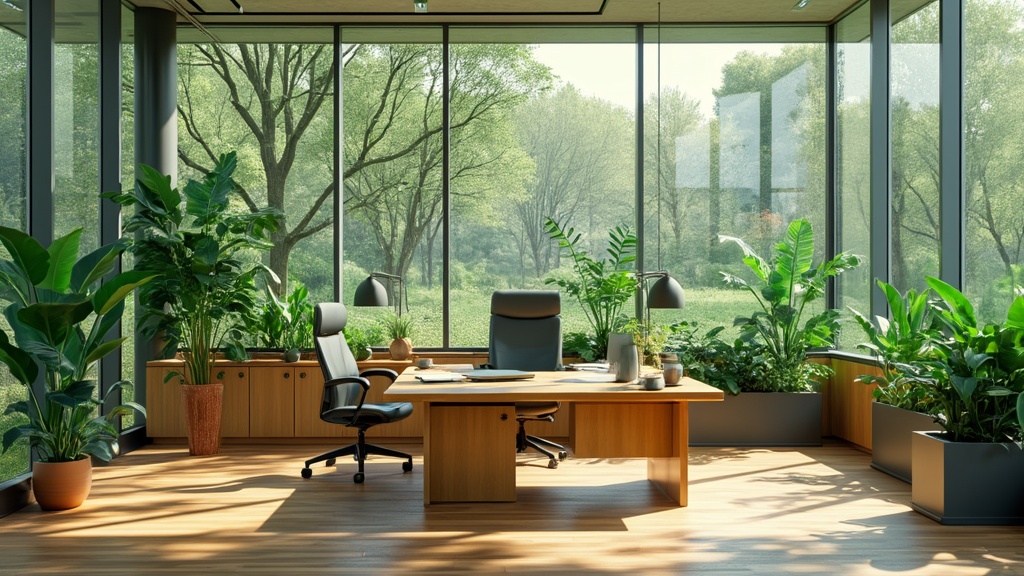Innovative biodegradable furniture materials are reshaping how we view sustainability in design. This growing trend highlights the potential for eco-friendly alternatives to transform the furniture industry.
By embracing renewable resources like bamboo and reclaimed wood, designers can create stunning pieces that reduce landfill waste significantly.
These materials enhance indoor air quality, supporting healthier living environments.
As consumer preferences shift towards more conscious choices, manufacturers are now motivated to innovate further, ensuring a bright future for sustainable craftsmanship and eco-conscious living.
Click here to learn more about: interior designers and decorators
Exploring Biodegradable Plastics
Revolutionary biodegradable plastics are gaining importance in modern waste management strategies. These materials decompose at rates far superior to traditional plastics, leading to reduced environmental impact.
Biodegradable plastics, often derived from renewable resources, also help mitigate marine and land pollution. Practical applications in everyday products are numerous, including compostable bags, food packaging, and various disposable items.
By integrating biodegradable plastics into recycling processes, we enhance waste reduction efforts, promoting a circular economy that complements existing strategies for sustainability.
Environmental Benefits Compared to Traditional Plastics
Biodegradable plastics offer distinctive advantages over conventional materials:.
- Reduced Pollution: These materials break down into non-toxic components, limiting their environmental footprint.
- Support for Composting: Many biodegradable plastics can be composted, contributing to nutrient-rich compost for agricultural use.
- Renewable Resource Use: Sourced from plants, they significantly lower reliance on fossil fuels compared to traditional plastics.
These eco-innovations represent essential steps towards minimizing the ecological footprint of various industries.

What Are Ecofriendly Materials
Recent trends reveal a significant shift towards ecofriendly materials, which embody the principles of modern sustainability. Ecofriendly materials include items derived from renewable resources, effectively minimizing environmental impact while maximizing functionality.
Innovative alternatives, such as bamboo and mycelium, exemplify the concept of sustainable craftsmanship in furniture design.
By embracing biodegradable plastics and recycled wood, manufacturers are transforming the landscape of ecofriendly options available today.
To successfully identify these materials, consumers should diligently search for ecolabels and certifications like FSC that guarantee sustainable sourcing practices. Prioritizing brands committed to low-impact manufacturing and understanding product compositions can enhance informed purchasing decisions.
The Role Of Sustainable Design
The integration of sustainable design significantly shapes the landscape of consumer choices regarding ecofriendly materials.
Designing with sustainability in mind promotes a reduction in waste and an enhancement of energy efficiency across products and services. As ecological awareness among consumers grows, the market demand for green alternatives in everyday items continues to escalate.
Numerous brands now highlight sustainable furniture designs, incorporating features such as reclaimed wood and versatile modular options that effectively reduce material waste.
Practical Examples of Sustainable Design
Innovative designs showcase ecofriendly materials, effectively balancing aesthetics and functionality.
These approaches not only foster environmental awareness but also empower consumers to make choices that align with their values, promoting an ecoconscious lifestyle and enhancing indoor air quality.
By prioritizing renewable resources and nontoxic finishes, sustainable designs adopt environmentally friendly practices that support a healthier planet.
Ecofriendly Materials
- Renewable resources, such as bamboo and mycelium, significantly reduce environmental impact while enhancing functionality.
- Brands that prioritize low-impact manufacturing contribute to a more sustainable marketplace, meeting the increasing consumer demand for green alternatives.
- Using reclaimed wood and modular designs in furniture can effectively minimize material waste and promote sustainable craftsmanship.
- Products with ecolabels and certifications like FSC ensure consumers are making informed choices that support sustainable sourcing practices.
Benefits Of Plantbased Fibers
Plant-based fibers serve as increasingly significant components in the search for sustainable design. Their inherent versatility enables innovative applications across various sectors, particularly in furniture and packaging.
Materials like hemp, flax, and jute not only exhibit remarkable durability but also facilitate eco-friendly alternatives by diminishing reliance on synthetic fibers.
Opting for packaging crafted from biodegradable sources, such as corn starch or bamboo, significantly aligns with a commitment to minimal waste.
Incorporating Plantbased Fibers into Daily Life
Daily life can seamlessly integrate these fibers; for example, selecting bamboo kitchen utensils or hemp-based home textiles can substantially reduce one’s ecological footprint.
Embracing sustainable aesthetics through recycled plant fibers in furniture enhances both visual appeal and the environment, making plant-based fibers an optimal choice for ecoconscious consumers.
How Does Furniture Recycling Work
Furniture recycling emerges as a critical component in promoting a circular economy. The process commences with a comprehensive evaluation to determine whether items can be recycled effectively.
Disassembly follows, during which non-recyclable components, such as hardware and upholstery, are removed. This step is essential for sorting materials like wood, metals, and textiles, ensuring they can be repurposed.
Steps in the Furniture Recycling Process
- Assessment: Evaluate items for recycling potential.
- Disassembly: Remove non-recyclable parts.
- Sorting: Organize materials for repurposing.
Finding local recycling options proves to be straightforward; platforms like Earth911 connect users with nearby facilities. Gaining insights into local community initiatives further aids in simplifying the recycling process, enabling responsible disposal of unwanted furniture. Engaging in this practice supports sustainable craftsmanship, extending the furniture lifecycle and significantly reducing waste in landfills.
Plant-Based Fibers and Furniture Recycling
- Plant-based fibers are biodegradable and can decompose naturally, reducing environmental impact.
- Using materials like hemp and jute can decrease carbon emissions compared to synthetic fibers.
- Furniture recycling can reduce landfill waste by up to 70%, promoting a more sustainable lifecycle for products.
- Incorporating recycled materials in furniture design can lead to a significant reduction in resource consumption.
Exploring Natural Adhesives In Furniture
Natural adhesives significantly enhance sustainability within furniture design. These ecofriendly materials, including plant-based glues, substantially reduce reliance on synthetic options while contributing positively to indoor air quality.
By minimizing toxic emissions, natural adhesives foster healthier living environments.
To select furniture featuring these green alternatives, consider products from brands that prioritize sustainable craftsmanship.
Look for ecolabels that indicate the use of renewable resources, ensuring the furniture you choose aligns with your values.
Engaging with manufacturers about their adhesive products can also promote informed consumer choices, further supporting eco-conscious living.
Here are practical tips for selecting furniture with natural adhesives:.
- Research brands that utilize plant-based adhesives in their manufacturing process.
- Ask for documentation or certifications that confirm the use of natural adhesives.
- Explore options made from recycled wood or other renewable resources.
The Impact Of Circular Economy
This innovative model is transforming approaches to furniture production and waste management. The circular economy emphasizes recycling, reuse, and the implementation of innovative materials, which promotes sustainability in furniture design.
Companies like IKEA are leading the charge, implementing take-back programs aimed at making all their products recyclable by
Emeco’s commitment to utilizing recycled aluminum in its chairs exemplifies how businesses can minimize their ecological footprint. Individuals can further contribute to these initiatives by:
- Supporting brands that embrace circular economy principles.
- Considering the purchase of upcycled furniture, which extends the lifecycle of materials.
- Practicing furniture recycling to reduce waste.
These actions play a significant role in fostering a sustainable lifestyle and minimizing overall waste.
Natural Adhesives and Circular Economy
- Natural adhesives can reduce indoor air pollution by up to 60%, promoting healthier living spaces.
- The circular economy can potentially reduce global waste by 70% by emphasizing recycling and reuse.
- Furniture made from recycled materials can save up to 90% of the energy required to produce new materials.
- Brands implementing circular economy practices can increase consumer loyalty by 30%, as sustainability becomes a key purchasing factor.
Why Choose Renewable Resources
Selecting renewable resources plays a pivotal role in fostering a sustainable future. These materials not only benefit the environment but also enhance economic viability.
Incorporating sustainable design into furniture choices significantly reduces our ecological footprint.
Prioritizing renewable materials allows consumers to pave the way for a healthier planet alongside a robust economy.
Environmental Benefits of Renewable Resources
Investing in eco-friendly materials, such as recycled wood, contributes to the circular economy.
This approach not only leads to less waste but also promotes biodiversity. By making informed purchasing decisions, consumers can support brands committed to environmentally responsible practices, which are essential for long-term ecological health.
Community and Economic Impacts
Choosing to support local artisans and embracing sustainable craftsmanship enhances community resilience while facilitating unique designs that mirror our values.
Such choices not only benefit personal style but also reinforce a collective responsibility towards nurturing our environment. By engaging in eco-conscious living, individuals contribute to a marketplace that prioritizes low-impact materials and green alternatives.
Ultimately, integrating these practices into everyday decisions leads to a more environmentally friendly lifestyle, where every piece of furniture can represent a commitment to sustainability.
Emphasizing ethical sourcing and utilizing non-toxic finishes ensures that our choices align with the principles of ecodesign, ultimately shaping a future that values both nature and community.
Renewable Resources
- Renewable resources can reduce greenhouse gas emissions by up to 70% compared to conventional materials.
- Investing in recycled materials can save up to 50% of energy consumption in manufacturing processes.
- Supporting local artisans can lead to a 30% increase in community economic resilience.
- Products made from sustainable materials often have a lower environmental impact, promoting biodiversity and reducing waste.
Green Furniture Brands Redefine Style
EcoFriendly Furniture Transforms Homes



